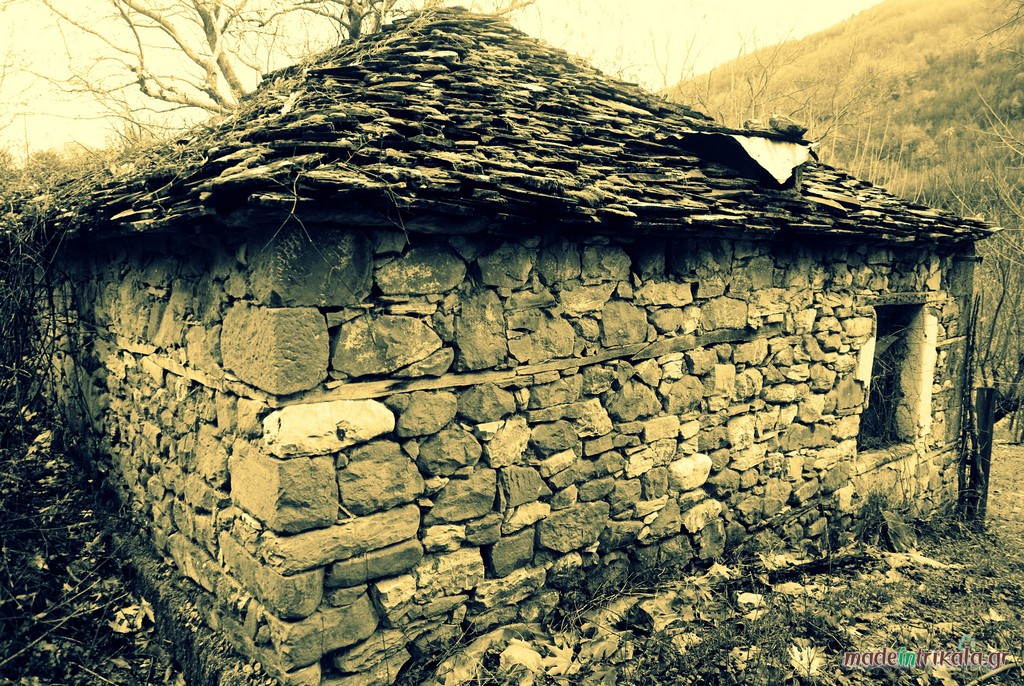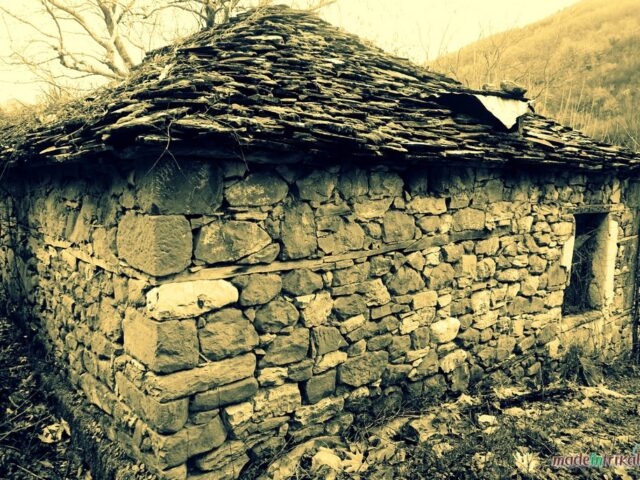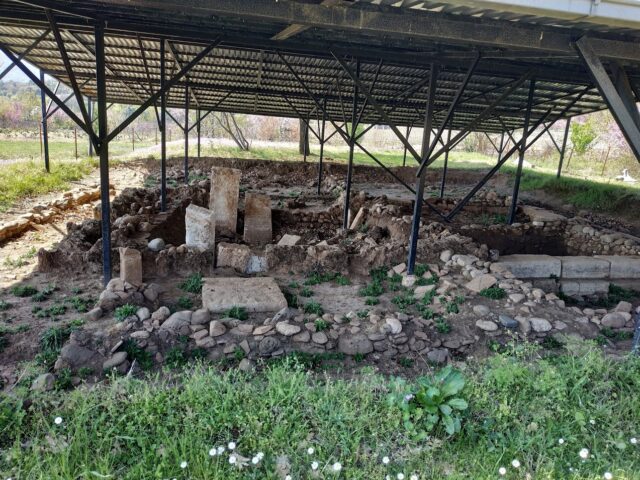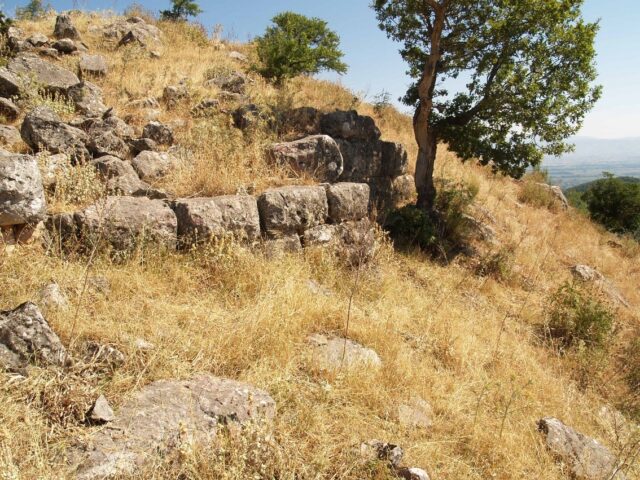Athenaion
Address
Pyli 420 32
GPS
39.4586, 21.6151
The Athenaios fortress is located on the narrow rocky peak of Souvlero (altitude 1008 m) on Mount Itamos, between the village of Porti to the south and the Monastery of the Dormition of the Virgin Mary at Goura to the north, on the border of the prefectures of Trikala and Karditsa. It is a fortress-observatory of the 4th century BC, built to control the passes of Mount Pindos and occupying a strategic position that dominated the surrounding mountainous areas. The wall survives on the eastern side of the fortress for a length of about 30 m, in a hook-shaped layout (]). It is built with polygonal stones, with a maximum preserved height of 2.50 m. On the northeast side stands a projecting rectangular tower, which offered additional fortification and surveillance capacity. By contrast, no wall was built on the western side of the rocky peak, since the sheer cliff there rises vertically to about 25 m, providing natural defense. About 500 m further north another similar fortress is located, but the Athenaios is usually identified with the stronghold on the summit of Souvlero (Th. A. Nimas, The Castles of Koziakas and Itamos in Western Thessaly, Trikalina 11 (1991), p. 238).
The Castles of Koziakas and Itamos in Western Thessaly, Trikalina 11 (1991), p. 238).
By Ministerial Decision 12524/9-12-1964 (Government Gazette 38/B/19-1-1965), the site was declared an archaeological monument as “the remains of the ancient fortress Athenaios, on the summit above the village of Pyli (Porta – Pozar).” The site remains difficult to access, which explains the limited archaeological research and the lack of further data. However, the Municipality of Pyli is planning the cleaning and opening of the path leading to the fortress, so that it can become accessible to visitors in the near future. The fortress of Athenaios is one of the less known yet important monuments of classical defensive architecture in Western Thessaly, part of the wider network of fortresses that secured control of the region and linked the plain with the passes of the Pindos mountains.




